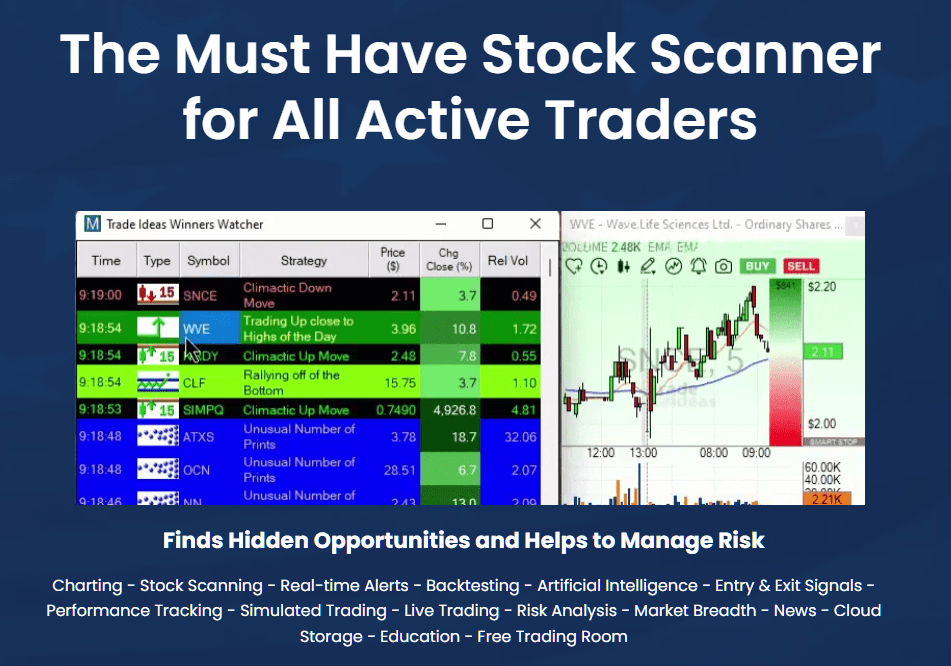20 Recommended Ideas For Choosing AI Stock Predicting Websites
20 Recommended Ideas For Choosing AI Stock Predicting Websites
Blog Article
Top 10 Tips For Evaluating The Integration And Compatibility Of Ai Analysis And Prediction Of Stocks Trading Platforms
Integrity and compatibility are the most important elements to be considered when evaluating AI analysis and forecasting platforms for trading. A platform which seamlessly integrates with the existing processes, tools and systems of your company will increase productivity and efficiency. Here are the top ten tips for assessing integration and compatibility.
1. Check Brokerage Integration
Supported brokers: Ensure the platform integrates with your preferred brokerage account or trading account.
Trade Execution: Verify whether the platform permits direct trade execution through the broker integrated.
Account synchronization Check whether the platform allows you to sync your account balances in real-time, as well for transactions and positions.
2. Examine API for Availability
API access - Check that the platform comes with an API that allows developers to build custom tools or automate work flow.
API documentation: Ensure that the documentation for the API includes clear examples and usage scenarios.
Rate Limits: Examine the API's rate limits to ensure they're reasonable and will handle your expected use.
3. Check the integrity of a third-party tool.
Popular tools: See if the platform integrates with tools like Excel, Google Sheets, or trading bots.
Import and export of data - Check that the platform allows for easy data export/import to/from other tools.
Extensions/Plugins: Make sure that your platform is compatible with extensions or plugins for additional features.
4. Test Compatibility Operating Systems
Desktop compatibility - Ensure that the platform you choose can be used with Windows, macOS and Linux.
Mobile compatibility: Verify whether there's a mobile app for iOS or Android.
Web-based: If your goal is to be flexible, verify whether your platform can be accessed using the standard web browser.
5. Evaluate Data Integration Capabilities
Data sources: Make sure that the platform integrates with multiple data resources (e.g. market data sources or news feeds).
Real-time data feeds: Determine whether the platform supports real-time data integration, allowing for the most up-to-date analysis.
Make sure that your platform allows historical data import to analyze or backtest.
6. Assess cloud and On-Premise Compatible
Cloud-based platforms : the platform should be accessible from any place with internet access.
On-premises solutions: Determine whether you'd like to install the software on your premises.
Look into the hybrid model. It is a hybrid model that combines on-premise and cloud capabilities.
7. Make sure to check for Cross Platform Syncronization
Device synchronization - Ensure that the platform syncs settings and information across all devices (desktops and mobiles).
Real-time updates: Make sure that the changes made to one device are immediately reflected on others.
Find out whether it allows data or functionality access even when you are offline.
8. Verify the Compatibility of Trading Strategies
Automated trading strategies or algorithmic ought to be backed by the trading platform.
Custom indicators: Determine whether you are able to utilize custom indicators or scripts.
Strategy backtesting Check for yourself if the trading platform supports backtesting with historical data.
9. Examine Security and Compliance
Data encryption - Ensure that your system is using encryption for all data, at all times, including when it is in rest.
Authentication : Verify that the platform supports safe authentication methods (e.g. 2-factor authentication).
Regulatory compliance : Verify if the platform complies wth relevant regulations.
10. Test Scalability and Performance
Scalability: The platform must be able to handle growing data volumes and users.
Performance under load: Find out whether your platform is able to adapt to conditions of high volatility in the market.
Resource usage: Determine the extent to which your platform is using the resources of its system (CPU/memory and bandwidth) efficiently.
Bonus Tips
Feedback from users: Read user reviews and testimonials to gauge the platform's integration capabilities.
Free trial: You can avail a demo or a no-cost trial to test the compatibility of the platform with your current workflows and tools.
Customer support: Make sure that your platform has a robust support for integration-related issues.
By following these tips, you can effectively assess the integration and compatibility of AI stock-predicting and analyzing platforms in order to ensure they are compatible with your existing systems, and improve the efficiency of your trading. Follow the top get more information for artificial intelligence stocks for blog info including ai stock picker, ai for trading, free ai investing app, ai copyright trading, ai investing, trader ai intal, stock analysis app, ai for investing, best ai trading platform, best stocks to buy now and more.
Top 10 Tips For Evaluating The Effectiveness Of Ai Stock Predicting/Analyzing Trading Platforms
It is essential to determine the performance and scalability of AI-driven stock prediction and trading platforms. This will guarantee that they are able to handle growing data volumes as well as market complexity and the demands of users. These are the top 10 tips to assess the scalability of AI-driven stock prediction and trading platforms.
1. Evaluate Data Handling Capacity
Tip: Check if the platform can process and analyze large datasets (e.g. historic stock data, real-time market feeds, or other data sources like news and social media).
Why: Scalable platforms need to handle increasing data volumes without performance degradation.
2. Check out real-time processing capabilities
See if your platform handles streaming data in real time, like live stock quotes, or breaking news.
Reason: Delays in trading decisions can result in missed opportunities.
3. Cloud Infrastructure and Elasticity Cloud Infrastructure and Elasticity: Take a look
Tips - Find out if a platform makes use of cloud-based infrastructure, e.g. AWS or Google Cloud.
The reason: Cloud platform elasticity allows the size of the system to change based on usage.
4. Algorithm Efficiency
Tips: Examine the efficiency of computation in AI models (e.g. deep learning, reinforcement learning, etc.)) that are used to make predictions.
Reason: Complex algorithmic structures can be resource-intensive. Making them more efficient is the key to scaling.
5. Study parallel processing and distributed computing
Check to see if your platform is using the concept of distributed computing or parallel processing (e.g. Apache Spark, Hadoop).
What are they: These technologies facilitate faster data processing and analytics across many nodes.
Review API Integration and Interoperability
Tips: Make sure to check the platform's integration with external APIs.
The reason: seamless platform integration ensures it can adapt to new sources of data or trading environment.
7. Analyze User Load Handling
Tip: Simulate large user traffic to test how the platform performs under high load.
The reason: Performance of a platform that is scalable should not be affected by the growth of users.
8. Evaluation of Model Retraining and Adaptability
Tip: Check how frequently the AI model is retrained and with what degree of efficiency.
Why: As markets change the models need to be updated rapidly to remain exact.
9. Check for Fault Tolerance and Redundancy
TIP: Make sure the platform has failover mechanisms, and has redundant systems in the event of software or hardware malfunctions.
What's the reason? Downtime can be costly in trading, so the ability to tolerate faults is crucial to allow for scalability.
10. Monitor Cost Efficiency
Review the costs involved in scaling up the platform. This includes cloud resources as well as data storage as in addition to computational power.
Why: The price of scalability shouldn't be unsustainable. Therefore, it is crucial to find a balance between performance and cost.
Bonus tip: Future-proofing
Assuring that the platform will be able to accommodate emerging technologies (e.g. advanced NLP, quantum computing) and changes in regulatory requirements.
It is possible to assess the efficacy and scalability of AI trading and stock prediction systems by focusing on this particular aspect. This will ensure that they are efficient, robust and ready for growth. See the top trading with ai info for more advice including ai stock trader, stocks ai, ai trading platform, ai copyright trading bot, ai investing tools, best ai copyright to buy, incite ai, ai stock market, ai for copyright trading, ai trading bots and more.